AWS Cloud Practitioner CLF-C02
Billing and Pricing
Billing for other services in general
Welcome back, AWS Cloud Practitioners! In this lesson, we explore the billing dimensions of several AWS services, including Amazon Elastic Block Store (EBS), Amazon Simple Storage Service (S3), DynamoDB, CloudFront, and Macie. This guide helps you understand which features and usage factors most significantly impact the cost of these services.
Amazon Elastic Block Store (EBS)
Amazon EBS provides persistent block storage using virtual hard drives for EC2 instances. It comes in two main types: magnetic hard drives and solid state drives (SSDs), with each offering distinct options:
- Magnetic: Options include cold archival and throughput optimized.
- SSD: Choices include general purpose and provisioned IOPS.
Pricing factors for EBS include:
- Volume size (with a maximum of up to 16 terabytes).
- Duration of volume usage.
- Additional features such as fast snapshot restore or direct snapshot copies.
Keep in mind that SSDs are typically more expensive than magnetic drives due to superior performance and flexible performance settings. When you provision a larger volume or keep it active longer, your costs increase.
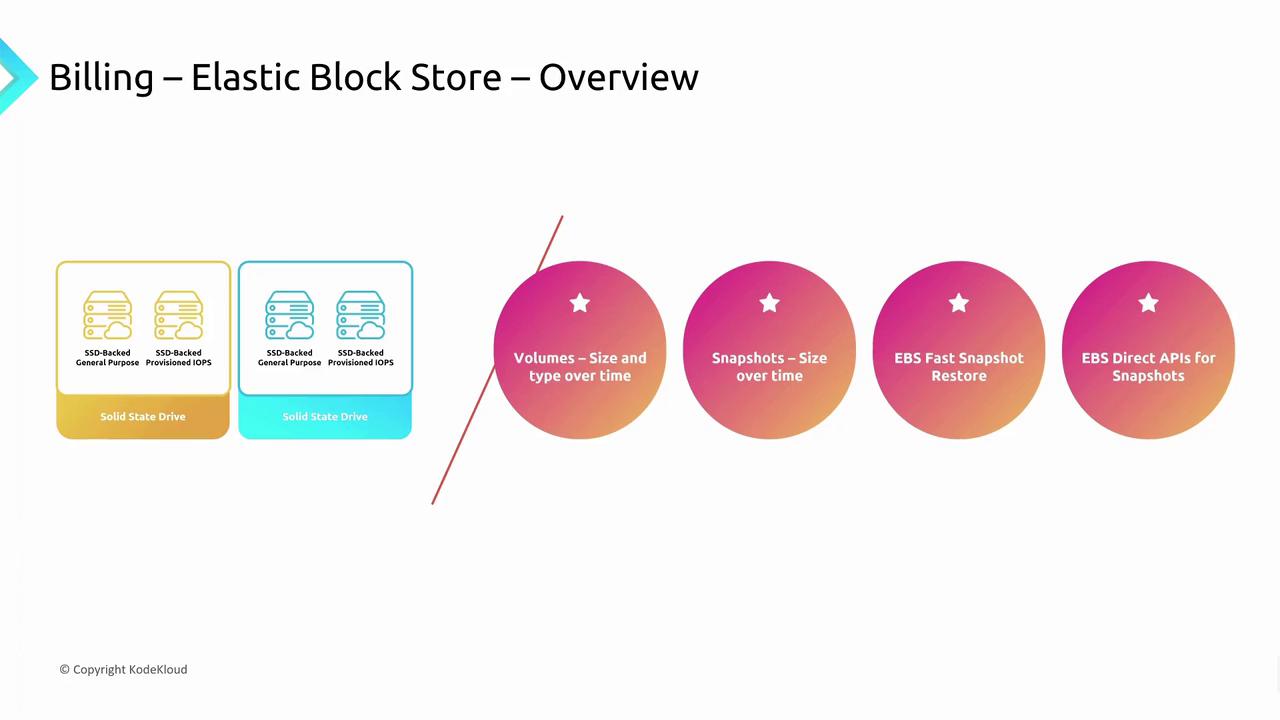
Amazon Simple Storage Service (S3)
Amazon S3 pricing is influenced by several factors that impact how you store and manage your data:
- Storage Class: Different tiers range from high-performance, highly available storage (hot) to cost-effective, archival storage (cold).
- Data Volume: Costs are based on both the number and size of objects, with individual files up to 5 terabytes.
- Request Types: Charges vary based on object read, write, or management requests. Frequently accessed objects, such as a popular PDF file, incur higher request costs.
- Data Transfer: Outbound data transfer (to the internet) is charged separately.
- Additional Features: Enabling versioning, inventory reporting, and other management features may also increase costs.
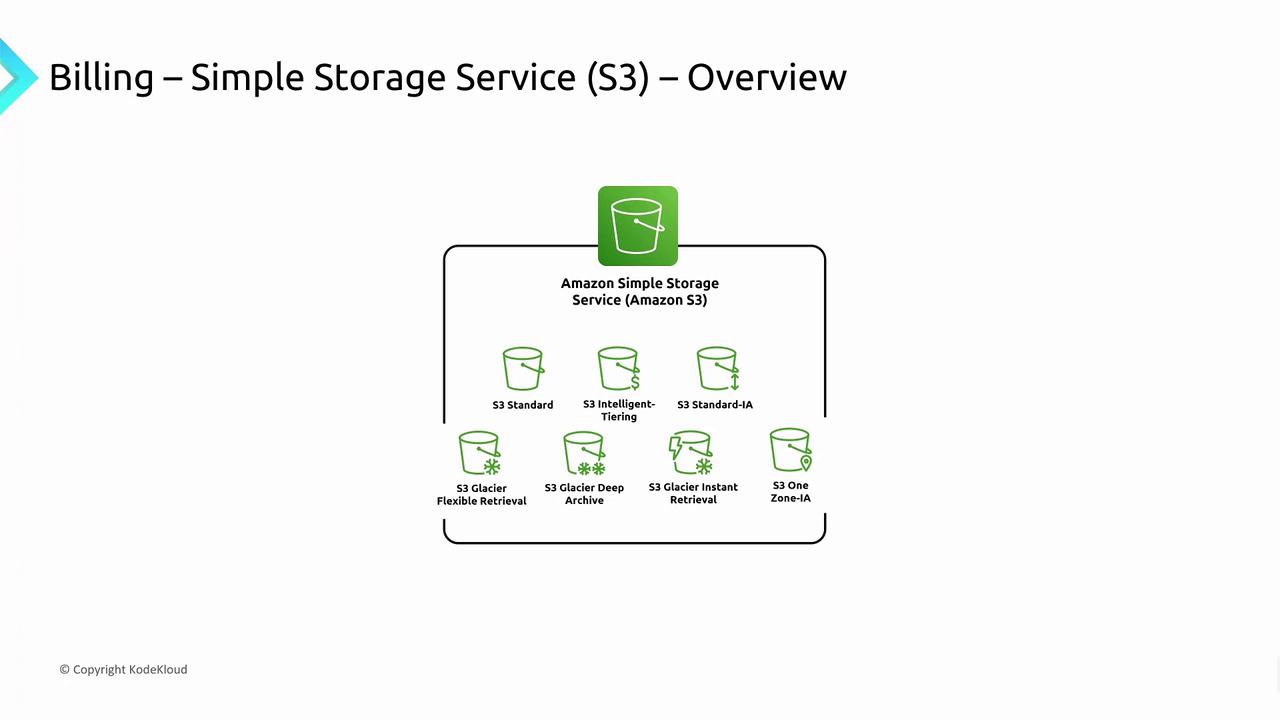
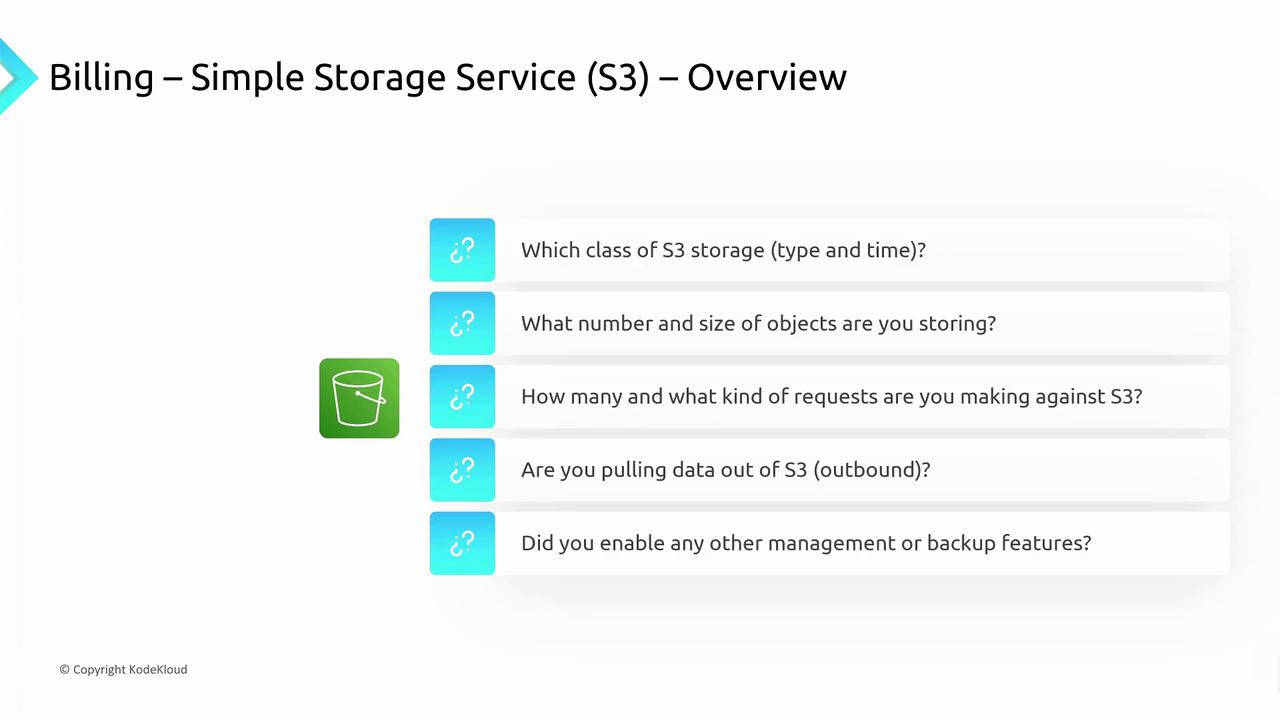
Amazon DynamoDB
Amazon DynamoDB is a high-performance NoSQL database service known for its single-digit millisecond response times. Billing for DynamoDB primarily depends on:
- Read and Write Capacity Units: Set your desired performance level by provisioning the appropriate capacity units. Increasing these units improves performance but also increases costs.
- Data Storage: The total amount of data stored directly influences your bill.
- Table Types: Different table types (such as standard tables vs. ones optimized for infrequent access) can affect pricing.
Scaling the read/write capacity units or storing larger amounts of data will result in higher charges.

Amazon CloudFront
Amazon CloudFront is a content delivery network (CDN) that caches content at edge locations globally, reducing latency by serving data from locations closer to your users. Key billing factors for CloudFront include:
- Data Transfer: Costs are based on the volume of data distributed, which can range from gigabytes to terabytes.
- Request Types: Fees are incurred based on the number of HTTP/HTTPS requests and API calls.
- Invalidation and Additional Features: Operations such as cache invalidation, advanced filtering, or using Lambda@Edge (which adds compute charges) can increase costs.
- Geographical Factors: Content distribution across different regions (for example, continental United States vs. Europe) can affect billing.
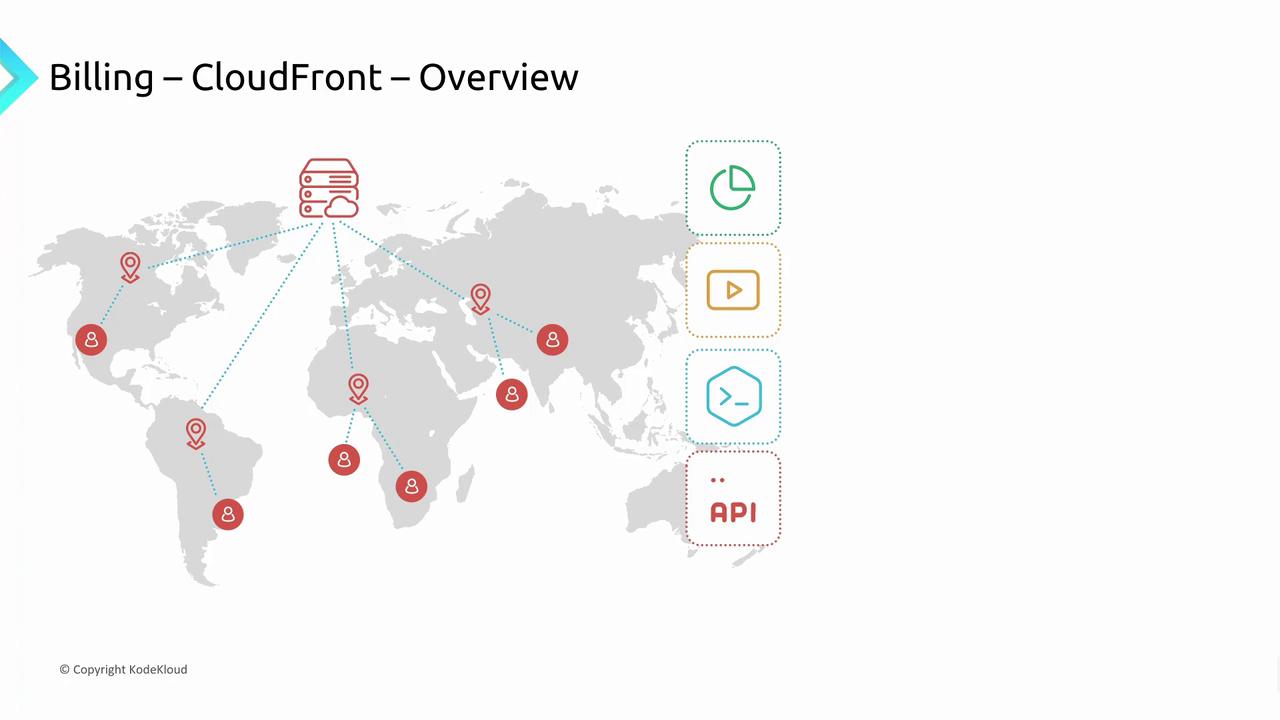
Amazon Macie
Amazon Macie is designed to automatically discover and classify sensitive data stored in your S3 buckets. It identifies data such as social security numbers, credit card numbers, and other personally identifiable information. Although Macie itself does not have a standalone charge, it generates costs through:
- Data Scanning: Charging is based on the volume of data scanned within S3. Since Macie uses S3 actions to perform automated sensitive data discovery, the overall cost reflects these scanning activities.
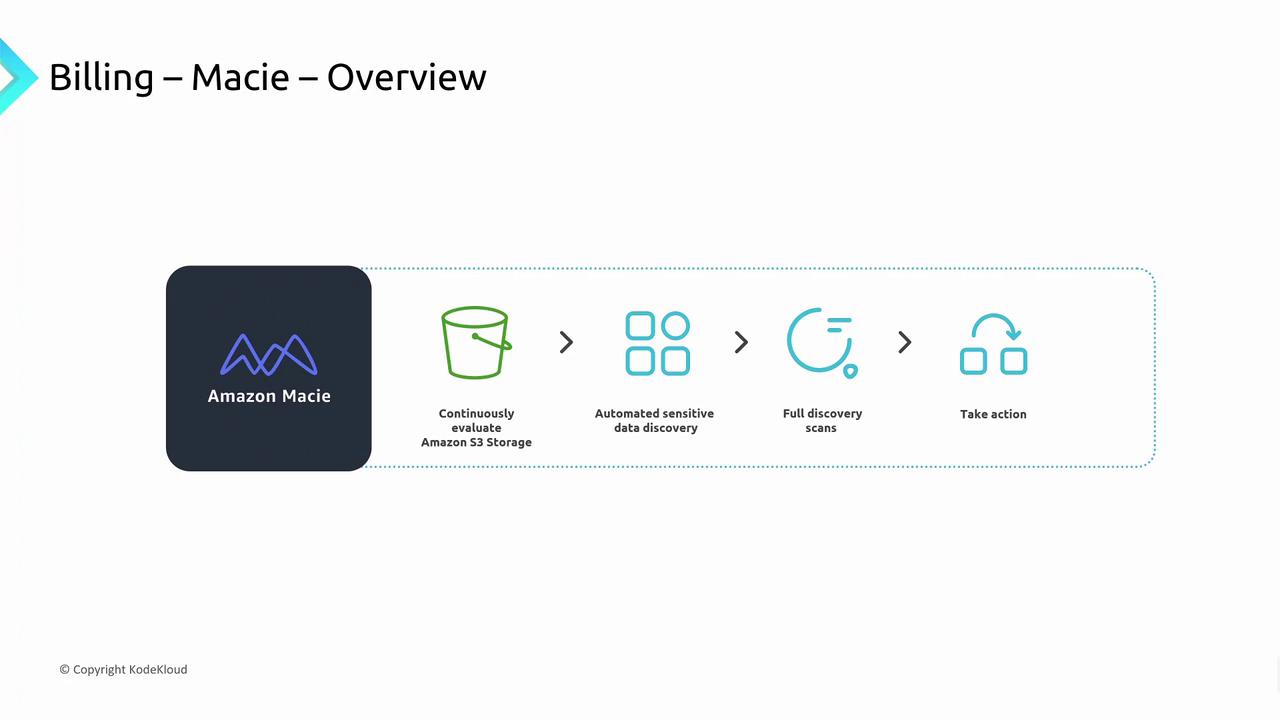
Optimization Tip
Review these billing dimensions to identify and optimize any usage patterns that could be driving up your AWS costs.
Summary
Below is a quick reference table summarizing the key billing factors for each service:
| AWS Service | Key Billing Factors |
|---|---|
| EBS | Volume size, duration, additional features (e.g., fast snapshot restore) |
| S3 | Storage class, data volume, request types, data transfer, additional features |
| DynamoDB | Read/write capacity units, data storage, table types |
| CloudFront | Data transfer, request types, cache invalidation, regional distribution |
| Macie | Data scanning within S3 |
Understanding these billing dimensions is crucial for effective usage optimization and cost control.
I'm Michael Forrester, and I hope you found this overview informative. See you in the next lesson!
Watch Video
Watch video content